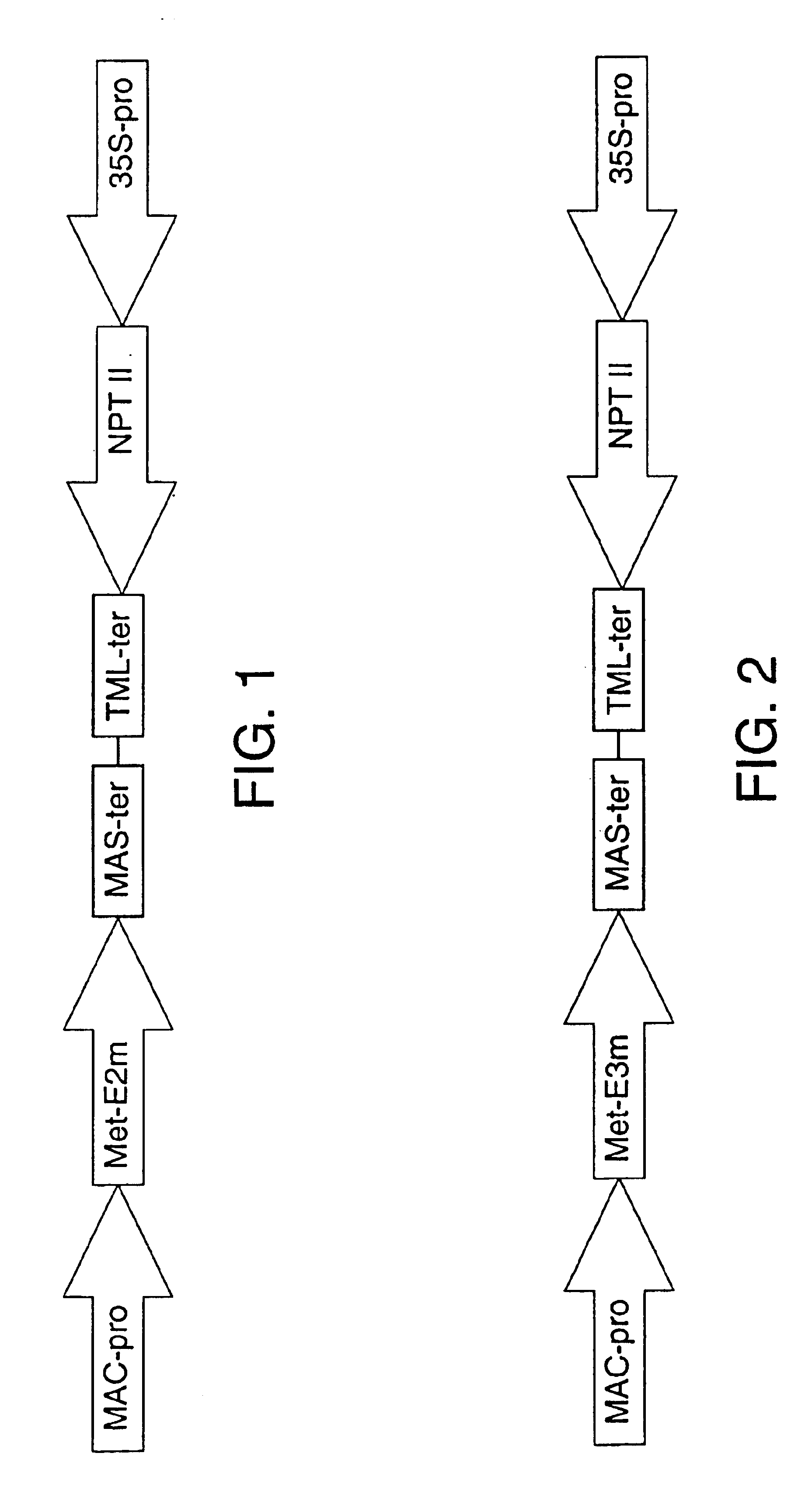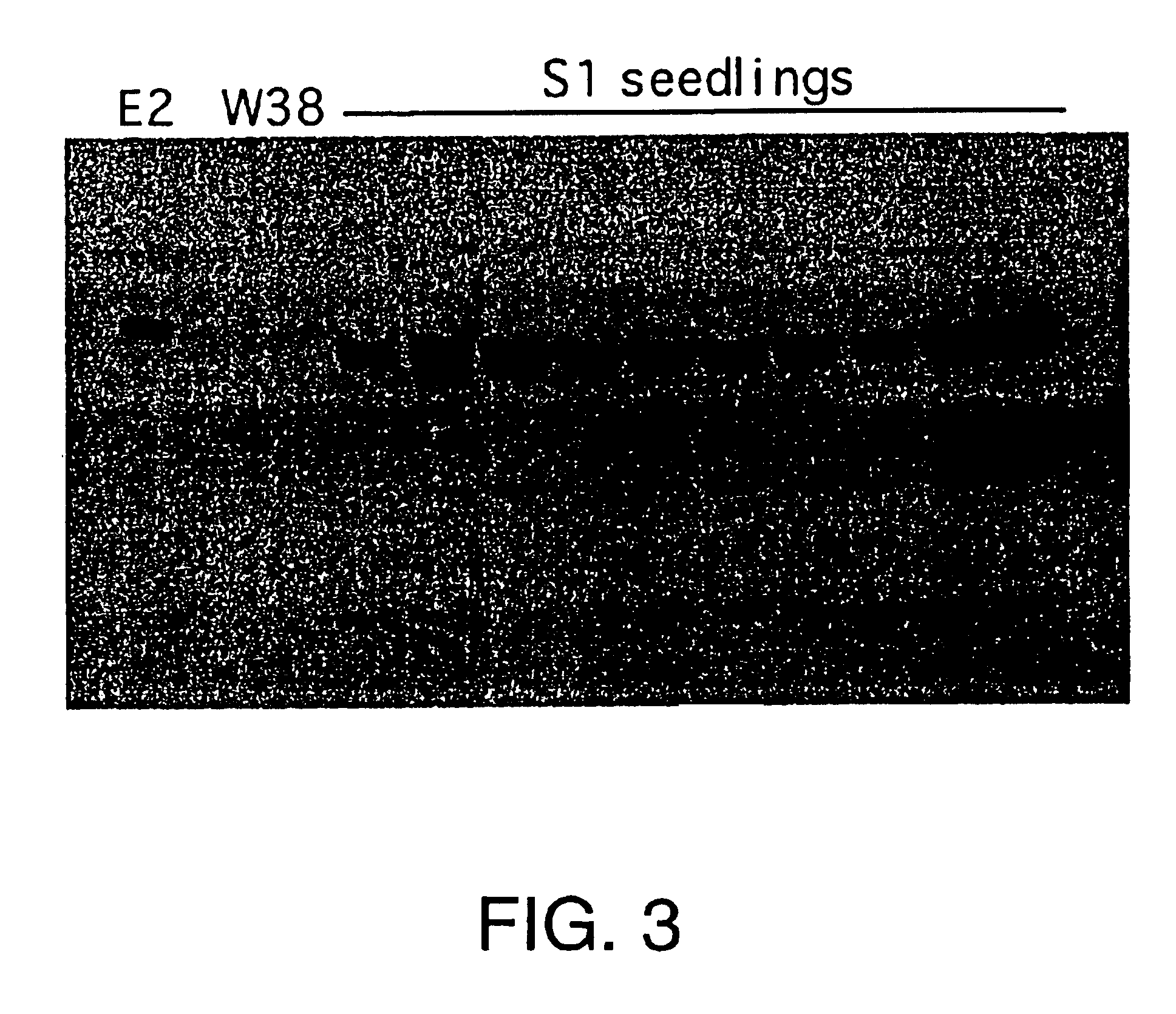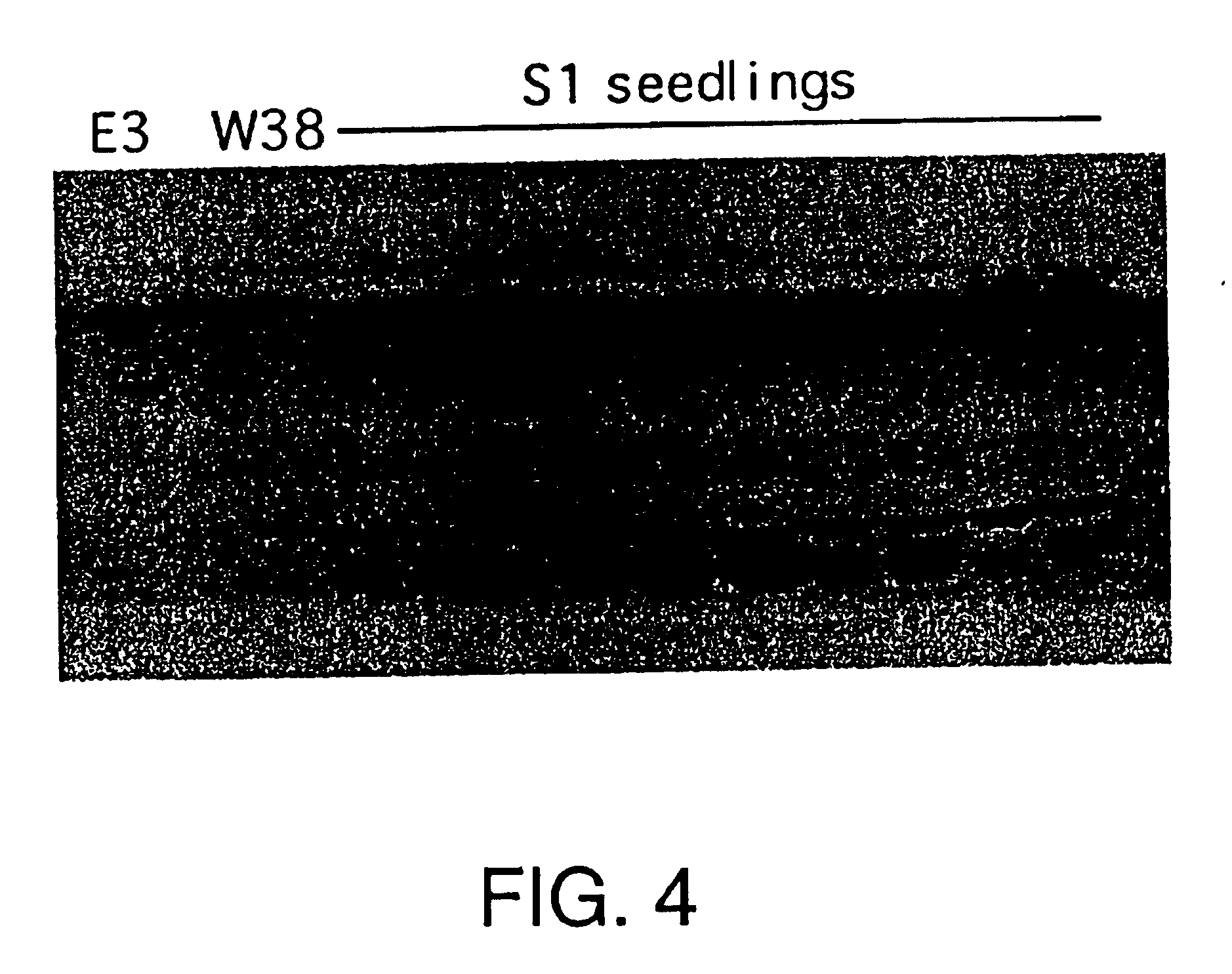Transgenic plants as an alternative source of lignocellulosic-degrading enzymes
- Summary
- Abstract
- Description
- Claims
- Application Information
AI Technical Summary
Problems solved by technology
Method used
Image
Examples
example 1
Production of Transgenic Alfalfa and Tobacco which Express Cellulase "E2" of T. fusca
Transgenic alfalfa and tobacco plants were produced using the same protocol. Binary vectors carrying recombinant cellulase expression cassettes were transformed into Agrobacterium tumefaciens strain LBA 4404, facilitating Agrobacterium-mediated transformation of plant tissue. The construct used is shown in FIG. 1. The gene encoding the E2 cellulase of Thermomonospora fusca was obtained as described by Ghangas & Wilson (1988). The E2 gene was modified by PCR using the XbaE2 primer, 5'-GCTCTAGATGAATGATTCTCCGTTC-3' (SEQ. ID. NO: 4) and the "-20 sequencing primer," 5'-TGACCGGCAGCAAAATG-3' (SEQ. ID. NO: 5), (product #1211, New England Biolabs, Inc., Beverly, Mass.), resulting in a recombinant gene in which an Xba I site (bold italics) was incorporated immediately 5' to an introduced start codon (underlined). This start codon precedes the first codon encoding the mature form of the E2 protein (AAT, nt's 3...
example 2
Production of Transgenic Alfalfa and Tobacco which Express Cellulase "E3" of T. fusca
Here, the expression construct depicted in FIG. 2 was used to transform alfalfa and tobacco using the same methodology as described in Example 1.
The gene encoding the E3 cellulase of Thermomonospore fusca was obtained as described by Zhang et al. (1995). The 5' end of the E3 gene was modified by PCR using the primer XbaE3, 5'-GCTCTAGATGCCGGCTGCTCGGTG-3' (SEQ. ID. NO: 6), resulting in a recombinant gene in which an Xba I site (bold italics) was incorporated immediately 5' to an introduced start codon (underlined). This start codon precedes the first codon encoding the mature form of the E3 protein (GCC, nt 689-691 in SEQ. ID. NO: 2). The 3' end of the E3 gene was modified using the primer RIE3, 5'-GGAATTCTTACAGAGGCGGGTAG-3' (SEQ. ID. NO: 7), thereby placing an Eco RI restriction site (bold italics) immediately 3' to the stop codon (underlined) for the E3 gene. Note that this latter primer is homologo...
example 3
Sexual Transfer of Cellulase Expression in Tobacco and Alfalfa
Original transgenic lines of tobacco and alfalfa shown to express either E2 or E3 cellulase were used in sexual crosses. In both cases, the trait segregated in progeny as predicted by Mendelian genetics. Expression levels were the same as, or greater than those seen in parental lines.
PUM
| Property | Measurement | Unit |
|---|---|---|
| Fraction | aaaaa | aaaaa |
| Fraction | aaaaa | aaaaa |
| Fraction | aaaaa | aaaaa |
Abstract
Description
Claims
Application Information
 Login to View More
Login to View More - R&D
- Intellectual Property
- Life Sciences
- Materials
- Tech Scout
- Unparalleled Data Quality
- Higher Quality Content
- 60% Fewer Hallucinations
Browse by: Latest US Patents, China's latest patents, Technical Efficacy Thesaurus, Application Domain, Technology Topic, Popular Technical Reports.
© 2025 PatSnap. All rights reserved.Legal|Privacy policy|Modern Slavery Act Transparency Statement|Sitemap|About US| Contact US: help@patsnap.com



